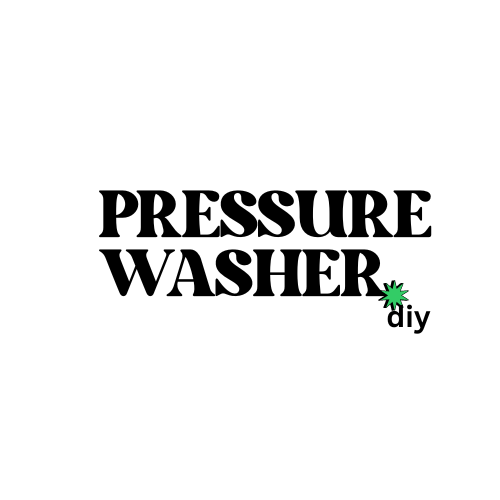Are you struggling with your Portland Electric Pressure Washer? Don’t worry, we’ve got you covered! This comprehensive guide will walk you through the most common issues and provide step-by-step solutions to get your pressure washer back in top shape.
Common Issues and Solutions
1. Pressure Washer Does Not Turn On
GFCI Plug Issues: The GFCI (Ground Fault Circuit Interrupter) plug is a safety feature that cuts off power when a ground fault is detected. If the GFCI plug is faulty, it can prevent the pressure washer from turning on. Check the GFCI plug by pressing the “Test” button. If the “Reset” button doesn’t pop out, the GFCI plug needs to be replaced. Ensure you use a GFCI-protected outlet with a minimum rating of 15 Amps to power your Portland Electric Pressure Washer.
Power Supply: Verify that the power outlet has power by plugging in another device. Check the power cord for any damage or loose connections. Ensure the cord is securely plugged into both the pressure washer and the power outlet.
Internal Damage: If the pressure washer still doesn’t turn on after checking the GFCI plug and power supply, the issue might be internal. This could be due to a faulty motor, switch, or other internal components. In this case, it’s best to seek professional service from a qualified technician.
2. Water Leaks
Loose Fittings: Inspect all the fittings, including the hose connections, pump inlet, and outlet connections. Tighten any loose fittings to prevent water leaks.
Worn Seals: Over time, the seals and packings inside the pressure washer can wear out, leading to water leaks. Identify the source of the leak and replace the worn seals or packings. Refer to the manufacturer’s instructions or consult a professional for the correct replacement parts and procedures.
3. Low Pressure
Restricted Water Supply: Ensure that the garden hose connected to the pressure washer is the correct size (minimum 3/4-inch diameter) and free of any kinks, leaks, or obstructions. A restricted water supply can significantly reduce the pressure output of the pressure washer.
Debris or Blockage: Check the nozzle, inlet, and discharge valves for any debris or blockages. Clean or replace the nozzle if it’s clogged. Inspect the inlet and discharge valves for any obstructions and clean them as needed.
4. Clogged Nozzle
Debris Removal: If the pressure washer’s nozzle becomes clogged, turn off the unit, disconnect the gun, and use a wire or a small object to carefully remove any debris or blockage from the nozzle opening.
5. Other Issues
Faulty Hose: Inspect the high-pressure hose for any slits, holes, or other damage. Replace the hose if necessary to ensure proper pressure and prevent leaks.
Chemical Injector Problems: Ensure that the correct chemical injection tip is being used and that the chemical valve is open. A clogged or malfunctioning chemical injector can affect the pressure washer’s performance.
Technical Specifications and Maintenance

Water Supply Requirements: The Portland Electric Pressure Washer requires a water supply that can provide at least twice the listed water output, which is typically 1.3 GPM (Gallons Per Minute). This means the pressure washer needs a water supply capable of delivering at least 2.6 GPM.
Maintenance: Regular maintenance is crucial for the longevity and optimal performance of your Portland Electric Pressure Washer. Here are some key maintenance tasks:
- Clean the nozzle regularly to prevent clogging.
- Flush the detergent bottle and lines to prevent chemical buildup.
- Dry the unit thoroughly after each use to prevent corrosion and damage.
- Check and replace worn seals, packings, and other consumable parts as needed.
- Refer to the manufacturer’s maintenance schedule and instructions for more detailed guidance.
Troubleshooting Steps
-
Unplug and Drain: If the pressure washer is leaking, unplug the unit and drain all the pressure before attempting to tighten any fittings or make any adjustments.
-
Check Power Supply: Ensure that the power outlet has power and that the power cord is properly connected to both the pressure washer and the outlet.
-
Check Fittings and Seals: Inspect all the fittings, including hose connections, pump inlet, and outlet connections. Tighten any loose fittings and replace any worn seals or packings.
-
Check Water Supply: Verify that the garden hose connected to the pressure washer is the correct size (minimum 3/4-inch diameter) and free of any leaks, kinks, or obstructions.
-
Check Nozzle and Valves: Inspect the nozzle for any debris or blockages and clean or replace it as needed. Also, check the inlet and discharge valves for any obstructions and clean them as necessary.
Additional Resources
-
Harbor Freight Pressure Washer Repair: A helpful YouTube video that demonstrates the repair process for a Harbor Freight pressure washer, which can provide valuable insights for troubleshooting your Portland Electric Pressure Washer: https://www.youtube.com/watch?v=mwk7Yk-GS2w
-
Portland Compressor Troubleshooting Guide: A comprehensive guide from Portland Compressor that covers various issues and solutions for pressure washers, including the Portland Electric Pressure Washer: https://www.portlandcompressor.com/washer/trouble-shooting
-
Harbor Freight Owner’s Manual: The detailed owner’s manual for Harbor Freight pressure washers, which can provide valuable information on safety, setup, maintenance, and troubleshooting: https://manuals.harborfreight.com/manuals/63000-63999/63254-792363632546.pdf
References
- https://www.youtube.com/watch?v=mwk7Yk-GS2w
- https://www.youtube.com/watch?v=ARFefRZzNa4
- https://www.portlandcompressor.com/washer/trouble-shooting
- https://manuals.harborfreight.com/manuals/63000-63999/63254-792363632546.pdf
- https://www.reddit.com/r/harborfreight/comments/13u7igc/portland_1750_psi_pressure_washer_wont_turn_on/
